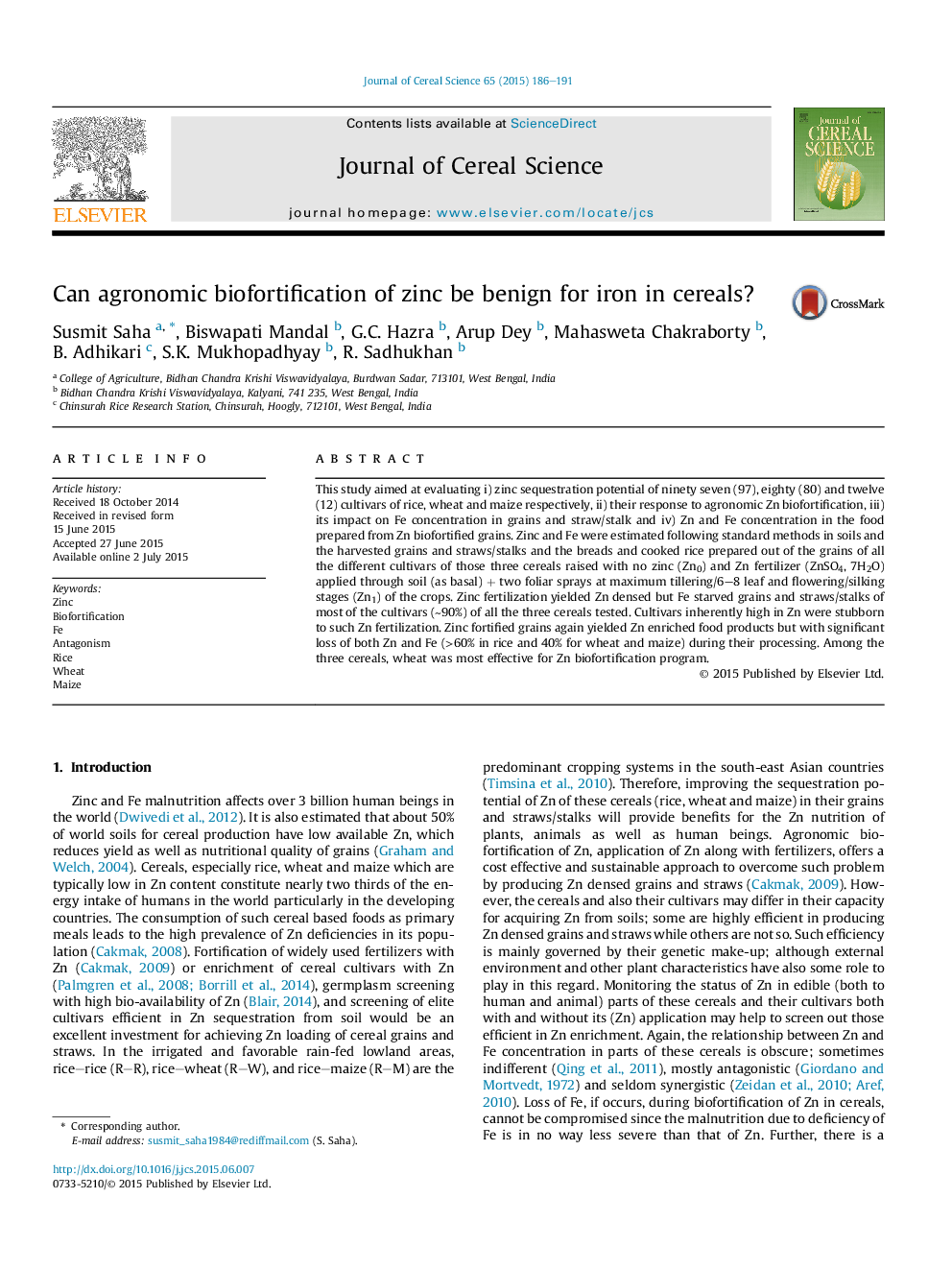| Article ID | Journal | Published Year | Pages | File Type |
|---|---|---|---|---|
| 6377812 | Journal of Cereal Science | 2015 | 6 Pages |
Abstract
This study aimed at evaluating i) zinc sequestration potential of ninety seven (97), eighty (80) and twelve (12) cultivars of rice, wheat and maize respectively, ii) their response to agronomic Zn biofortification, iii) its impact on Fe concentration in grains and straw/stalk and iv) Zn and Fe concentration in the food prepared from Zn biofortified grains. Zinc and Fe were estimated following standard methods in soils and the harvested grains and straws/stalks and the breads and cooked rice prepared out of the grains of all the different cultivars of those three cereals raised with no zinc (Zn0) and Zn fertilizer (ZnSO4, 7H2O) applied through soil (as basal)Â +Â two foliar sprays at maximum tillering/6-8 leaf and flowering/silking stages (Zn1) of the crops. Zinc fertilization yielded Zn densed but Fe starved grains and straws/stalks of most of the cultivars (â¼90%) of all the three cereals tested. Cultivars inherently high in Zn were stubborn to such Zn fertilization. Zinc fortified grains again yielded Zn enriched food products but with significant loss of both Zn and Fe (>60% in rice and 40% for wheat and maize) during their processing. Among the three cereals, wheat was most effective for Zn biofortification program.
Related Topics
Life Sciences
Agricultural and Biological Sciences
Agronomy and Crop Science
Authors
Susmit Saha, Biswapati Mandal, G.C. Hazra, Arup Dey, Mahasweta Chakraborty, B. Adhikari, S.K. Mukhopadhyay, R. Sadhukhan,
